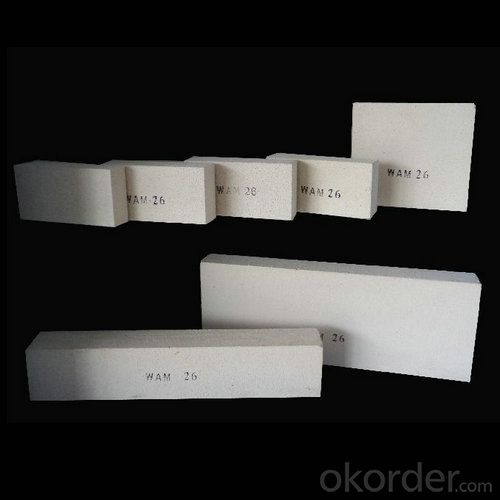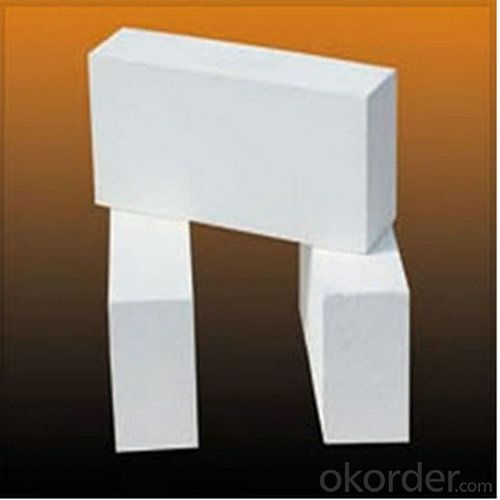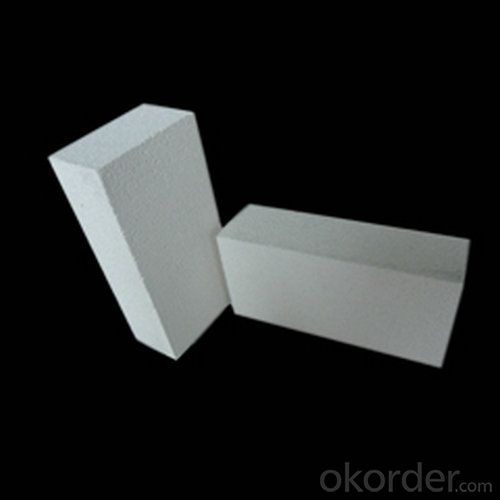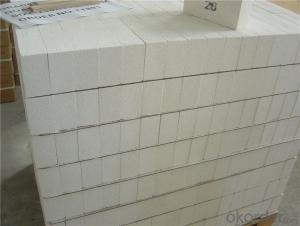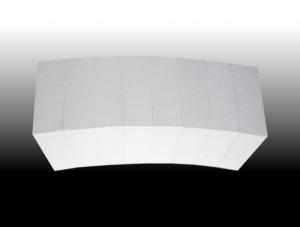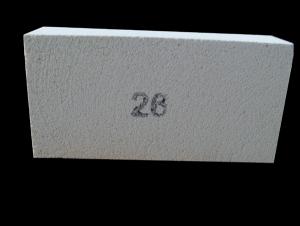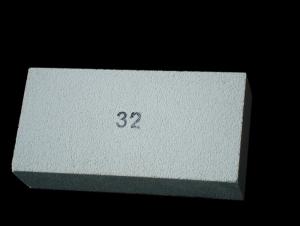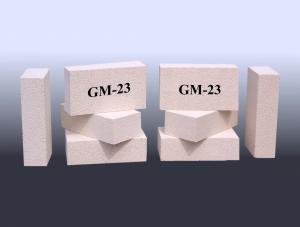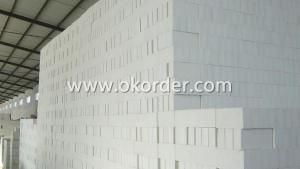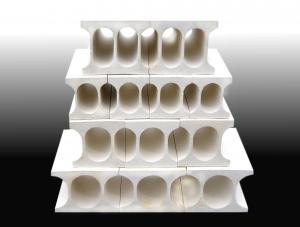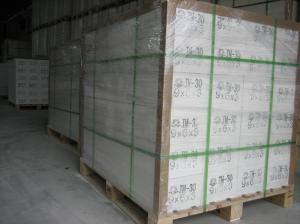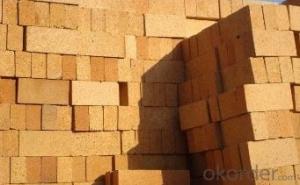Insulating Fire Brick GJM26 Light Weight and Low Thermal Conductivity
- Loading Port:
- Tianjin
- Payment Terms:
- TT OR LC
- Min Order Qty:
- 1 m.t.
- Supply Capability:
- 20000 m.t./month
OKorder Service Pledge
OKorder Financial Service
You Might Also Like
General Information of Insulating Firebricks
CMAX insulating firebricks are classified under temperature between 1300℃ to 1700℃, manufactured from high purity alumina clay.
Feature of Insulating Firebricks
Light weight and low thermal conductivity
Low heat storage
Low iron and impurities
High thermal shock resistance
Application of Insulating Firebricks
CMAX insulating firebricks can be used as a hot face lining directly exposed to the heat or as a backup insulation layer in iron and steel mills, non-ferrous foundries, petrochemical, ceramic, glass.
Images of Insulating Firebricks
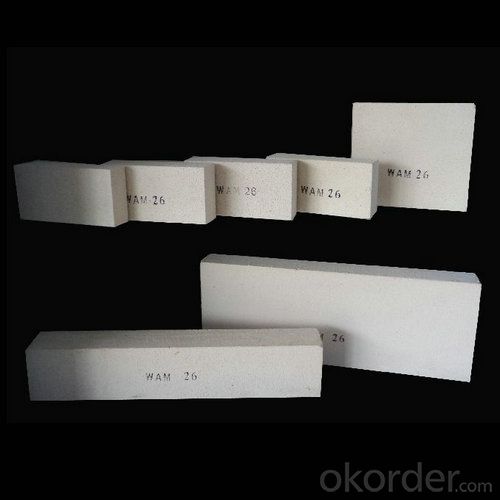
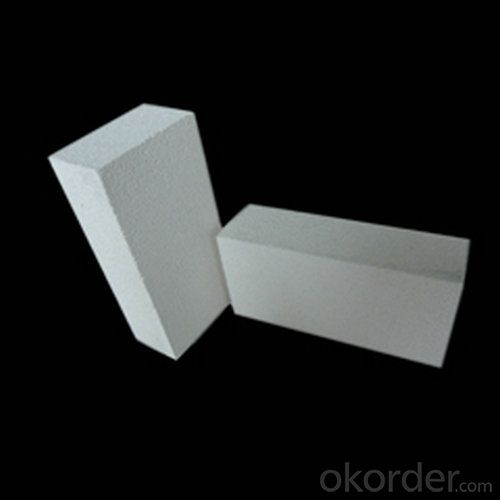
Technical Data of Insulating Firebricks
INSULATING FIRE BRICK---GJM26
Classification Temperature (℉/℃) 2600/1430
Bulk Density (g/cm3) ≤0.8
Thermal Conductivity
800℃, W/m.K ≤0.35
1000℃, W/m.K ≤0.39
1200℃, W/m.K ≤0.43
Reheating Linear Change (%) 1410℃×12h
≤0.7
Chemical Composition (%)
Al2O3 ≥55
Fe2O3 ≤0.7
Company Introduction
Who CNBM is
CNBM is a Fortune 500 and a governmental owned National Building Material company in Beijing, China.
What CNBM Can Do
We can supply ALL KINDS OF REFRACTORIES BRICK/CASTABLE and CERAMIC FIBER PRODUCTS in high quality and competitive price.
What Certification CNBM Have
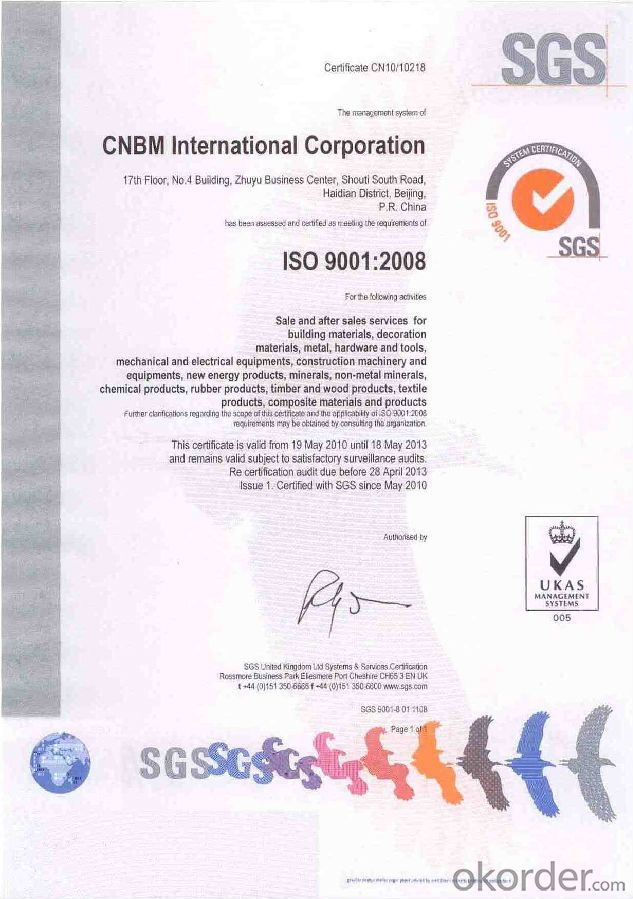
FAQ
If I need your offer, what information do you need?
In order to choose suitable products, it will be appreciated to provide us the information, such us specification, technical data, order quantity, products application etc.
If any question, please contact us freely.
How do you control the products quality?
With strict quality control system throughout the materials selection and production process, our refractory and ceramic fiber products quality is effectively controlled to meet customer requirements.
From the raw materials selecting, our quality control begin. The quality certificates of raw materials are required and each batch will be tested before using. During production, the quality control are conducted by workers and then each piece will be sorted and examined by quality supervisor.
I’m not satisfied with the refractory materials I used before, can you propose more suitable pro
Yes. Please give us the problems you faced, your requirements and the technical data of the products you used before. That we will give you our suggestion and propose the solution based on your special requirements.
What’s the lead time for my order?
It depends on customers’ requirements and our production schedule. And usually we need 30-60 days for refractory bricks,10-25 days for unshaped refractory materials and 10-20 days for ceramic fiber blankets.
Can you offer Door-to-Door delivery?
Yes, but only for some countries such us U.S., UAE, Saudi Arabia, Iran, and Russia, etc.
What is the minimum quantity?
There is no minimum order quantity. Depending on the item and processing, there may be a minimum production required, however we can offer a quotation based only on the quantity you need.
- Q: Are insulating fire bricks resistant to high-pressure environments?
- Insulating fire bricks are not specifically designed to withstand high-pressure environments. While they are known for their excellent thermal insulation properties and resistance to high temperatures, their ability to withstand pressure is limited. Insulating fire bricks are typically used in low-pressure applications where their insulating properties are more important than their ability to withstand pressure. If a high-pressure environment is a concern, it is recommended to use other types of refractory bricks specifically designed for such conditions, like dense fire bricks or high-alumina bricks, which offer superior strength and resistance to pressure.
- Q: Do insulating fire bricks have a high fireproof rating?
- Yes, insulating fire bricks have a high fireproof rating. They are designed to withstand high temperatures and provide excellent insulation, making them ideal for applications where fire resistance is necessary.
- Q: Can insulating fire bricks be used for insulation in ovens?
- Indeed, ovens can make use of insulating fire bricks for insulation purposes. These bricks are specifically crafted to endure extreme temperatures and offer exceptional insulating capabilities. With their low thermal conductivity, they effectively retain heat, preventing its escape from the oven. This aids in maintaining a steady temperature within the oven, promoting efficient and uniform cooking. Moreover, these bricks are resilient against thermal shock, enabling them to withstand rapid temperature fluctuations without sustaining damage. Consequently, utilizing insulating fire bricks for oven insulation proves to be a sensible and efficient decision.
- Q: What is the typical thermal shock resistance of an insulating fire brick?
- The thermal shock resistance of an insulating fire brick can vary based on its specific composition and manufacturing process. However, in general, insulating fire bricks are designed to possess high thermal shock resistance. These bricks are often made from lightweight materials like alumina, silica, and other refractory compounds, which exhibit excellent thermal insulation properties. Insulating fire bricks are engineered to endure rapid temperature changes without cracking or breaking. They can typically withstand thermal shocks caused by sudden exposure to extreme heat or cold, as well as rapid heating or cooling cycles. The thermal shock resistance of insulating fire bricks is crucial in applications where they are subjected to fluctuating temperatures, such as furnaces, kilns, and other high-temperature environments. While there is no universally standardized value for the thermal shock resistance of insulating fire bricks, they are typically designed to endure thermal shocks of several hundred degrees Celsius without significant damage. Some high-quality insulating fire bricks can even tolerate thermal shocks of 1000°C or more. It is important to note that the specific thermal shock resistance of an insulating fire brick may also depend on factors like its thickness, density, and overall quality. Therefore, it is advisable to refer to the manufacturer's specifications or conduct specific tests to determine the precise thermal shock resistance of a particular insulating fire brick.
- Q: What are the main uses of insulating fire bricks?
- Insulating fire bricks, also known as IFBs, are primarily used in high-temperature applications where thermal insulation and heat resistance are required. These bricks are made from lightweight materials, such as clay, silica, and alumina, and are designed to withstand extreme temperatures. One of the main uses of insulating fire bricks is in the construction of kilns and furnaces. These bricks are used to line the walls, floors, and roofs of these high-temperature devices, providing insulation to prevent heat loss and improve energy efficiency. The insulating properties of IFBs help to maintain a consistent and controlled temperature inside the kilns and furnaces, allowing for more efficient heating and cooling processes. Insulating fire bricks are also commonly used in the construction of chimneys and flues. These bricks are resistant to the corrosive effects of flue gases and can withstand the high temperatures generated by the combustion process. The insulation provided by IFBs helps to prevent heat transfer to the surrounding structures, reducing the risk of fire and ensuring the safety of the chimney or flue. Additionally, insulating fire bricks find applications in the manufacturing of fireplaces, pizza ovens, and other outdoor cooking equipment. These bricks help to retain heat within the cooking chamber, allowing for even cooking and reducing fuel consumption. The insulating properties of IFBs also prevent the outer surfaces of these devices from becoming too hot, reducing the risk of accidental burns. Overall, the main uses of insulating fire bricks revolve around their ability to provide thermal insulation and heat resistance in high-temperature environments. Whether in kilns, furnaces, chimneys, or cooking equipment, these bricks play a crucial role in maintaining efficient heating processes, ensuring safety, and conserving energy.
- Q: Are insulating fire bricks suitable for insulation in power boilers?
- Insulating fire bricks can be suitable for insulation in power boilers depending on the specific requirements and conditions of the boiler. Insulating fire bricks are known for their high temperature resistance and low thermal conductivity, which makes them effective in reducing heat loss and improving energy efficiency in various applications. However, when considering their use in power boilers, several factors need to be taken into account. Firstly, the operating temperature and pressure of the boiler should be considered to ensure that the insulating fire bricks can withstand these conditions without any degradation or failure. Power boilers typically operate at high temperatures and pressures, so it is important to choose insulating fire bricks that have a high temperature rating and can withstand the required pressure. Additionally, the composition and structure of the insulating fire bricks should be considered. Some power boilers may contain corrosive or abrasive substances, which can potentially damage the insulating fire bricks over time. Therefore, it is important to select insulating fire bricks that are resistant to corrosion and abrasion, or to consider additional protective measures such as coatings or linings. Furthermore, the thermal conductivity of the insulating fire bricks should be evaluated. While insulating fire bricks have low thermal conductivity compared to other refractory materials, it is important to ensure that they provide sufficient insulation for the specific requirements of the power boiler. This may involve calculating heat transfer rates and determining the appropriate thickness and density of the insulating fire bricks to achieve the desired insulation performance. Ultimately, the suitability of insulating fire bricks for insulation in power boilers depends on careful consideration of factors such as temperature, pressure, composition, structure, and thermal conductivity. Engaging with experts and conducting proper evaluations and calculations will help determine if insulating fire bricks are a suitable choice for insulation in a particular power boiler application.
- Q: Can insulating fire bricks be used in the construction of industrial dryers?
- Industrial dryers can utilize insulating fire bricks, which are specifically designed to have low thermal conductivity. This allows them to retain heat and prevent heat loss, making them an ideal option for applications that require high temperatures. These fire bricks are created using lightweight materials like clay, silica, and alumina, and can withstand temperatures of up to 3000°F (1650°C). They possess exceptional insulation properties, leading to reduced energy consumption and improved efficiency for the industrial dryer. Moreover, insulating fire bricks are highly resistant to thermal shock, meaning they can endure sudden temperature changes without cracking or breaking. This quality is particularly crucial in industrial dryer settings where temperature fluctuations can occur rapidly. In conclusion, insulating fire bricks are a suitable choice for constructing industrial dryers due to their low thermal conductivity, resistance to high temperatures, and ability to withstand thermal shock.
- Q: Can insulating fire bricks be used in the construction of lime calciners?
- Yes, insulating fire bricks can be used in the construction of lime calciners. Lime calciners require high temperatures to produce lime, and insulating fire bricks are designed to withstand and retain heat. These bricks have low thermal conductivity, allowing them to effectively insulate the calciner and prevent heat loss. Additionally, insulating fire bricks are lightweight, making them easier to handle and install in the construction of lime calciners.
- Q: Can insulating fire bricks be used for insulation in boilers?
- Certainly, insulation in boilers can make use of insulating fire bricks. These bricks are specially engineered to endure extreme temperatures and offer exceptional thermal insulation. Their thermal conductivity is minimal, resulting in a significant decrease in heat dissipation and an enhancement in the energy efficacy of boilers. Moreover, insulating fire bricks are lightweight and simple to install, rendering them a favored option for boiler insulation. They aid in preserving elevated temperatures within the boiler, facilitating efficient combustion and heat transfer, while simultaneously shielding the outer framework from excessive heat. All in all, insulating fire bricks are a dependable and efficient alternative for boiler insulation.
- Q: Can insulating fire bricks be used as a lining for chimneys?
- Yes, insulating fire bricks can be used as a lining for chimneys. These bricks are designed to withstand high temperatures and provide insulation, making them suitable for lining chimneys and protecting them from heat damage.
Send your message to us
Insulating Fire Brick GJM26 Light Weight and Low Thermal Conductivity
- Loading Port:
- Tianjin
- Payment Terms:
- TT OR LC
- Min Order Qty:
- 1 m.t.
- Supply Capability:
- 20000 m.t./month
OKorder Service Pledge
OKorder Financial Service
Similar products
Hot products
Hot Searches
Related keywords







